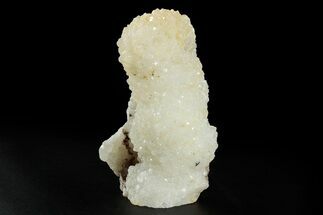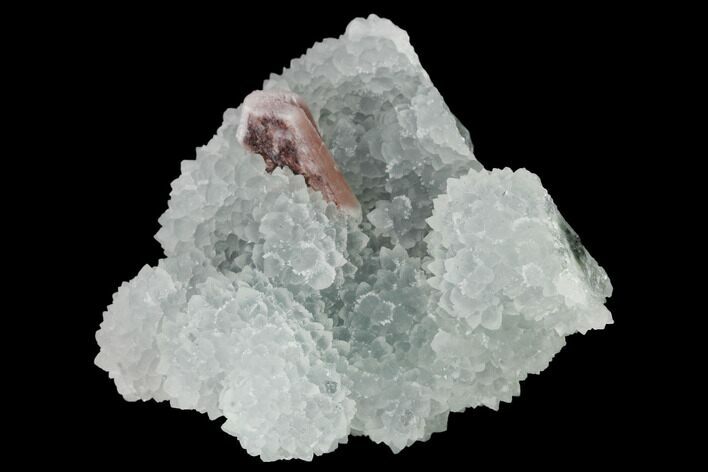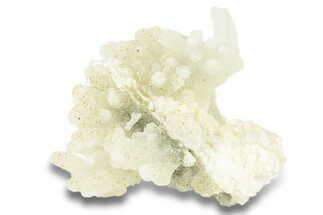This Specimen has been sold.
1.6" Stilbite Crystal on Quartz Chalcedony Stalactite - India
This is a beautiful, 1.6" wide specimen that features a stilbite crystal that formed over a quartz encrusted chalcedony stalactite, collected from Maharashtra, India.
Stilbite is a tectosilicate mineral of the zeolite group that is commonly found in zeolite deposits. Crystals often form flowery bowtie or hourglass-shaped structures and come in a variety of colors. Some of the most beautiful colorations are the pink or peach tints.
Chalcedony is any microcrystalline variety of silica composed of very fine intergrowths of quartz and mogánite: microcrystalline minerals have microscopic crystals that cannot be observed by the naked eye. Both quartz and mogánite have the same chemical formula SiO2 (silicon dioxide), but different crystal structures. When free from impurities, chalcedony is colorless and transparent. Depending on impurities present during formation, chalcedony can form in a wide variety of colors including red, yellow, green, blue, purple, grey, white, and numerous hues in between. Chalcedony is quite hard at 7 on the Mohs Hardness Scale: this matches its main component quartz, which is the benchmark mineral for the scale at 7.
About Quartz
Quartz is the name given to silicon dioxide (SiO2) and is the second most abundant mineral in the Earth's crust. Quartz crystals generally grow in silica-rich environments--usually igneous rocks or hydrothermal environments like geothermal waters--at temperatures between 100°C and 450°C, and usually under very high pressure. In either case, crystals will precipitate as temperatures cool, just as ice gradually forms when water freezes. Quartz veins are formed when open fissures are filled with hot water during the closing stages of mountain formation: these veins can be hundreds of millions of years old.
Quartz is the name given to silicon dioxide (SiO2) and is the second most abundant mineral in the Earth's crust. Quartz crystals generally grow in silica-rich environments--usually igneous rocks or hydrothermal environments like geothermal waters--at temperatures between 100°C and 450°C, and usually under very high pressure. In either case, crystals will precipitate as temperatures cool, just as ice gradually forms when water freezes. Quartz veins are formed when open fissures are filled with hot water during the closing stages of mountain formation: these veins can be hundreds of millions of years old.
SPECIES
Stilbite & Quartz var. Chalcedony
LOCATION
Maharashtra, India
SIZE
1.6" wide
CATEGORY
ITEM
#168985
 Reviews
Reviews













